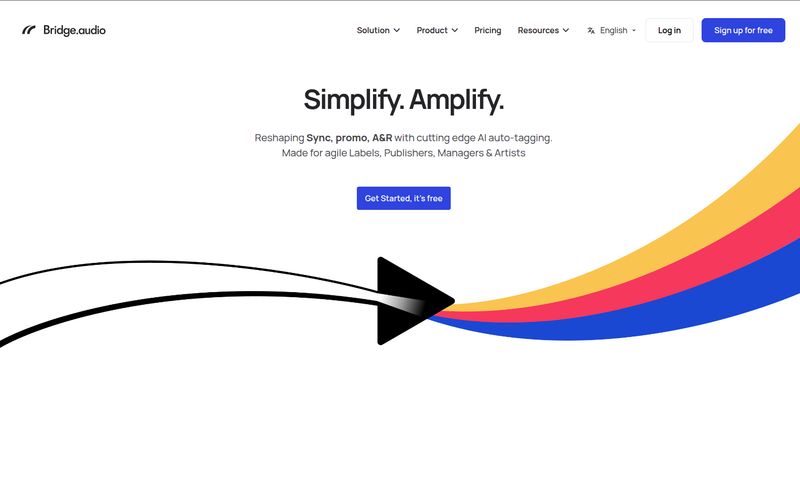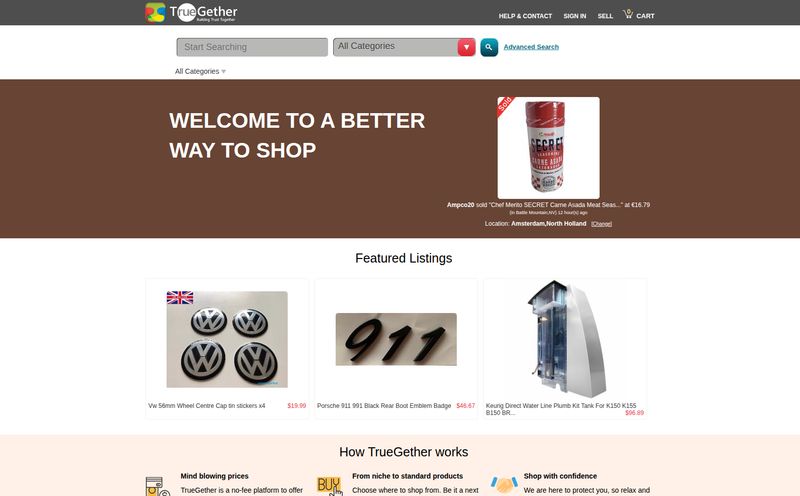I’ve been in the SEO and digital marketing game for a long time. Long enough to remember when “big data” was just a buzzword people threw around in meetings to sound smart. We’ve all been there, right? You spend weeks, maybe even months, crafting the perfect campaign. The copy is killer, the creative is slick, but when you launch... crickets. Or worse, you burn through your CPC budget attracting completely the wrong people. It’s a gut-wrenching feeling. I once blew a client's budget on a campaign targeting what we thought were high-value B2B leads, only to find out we were hitting recent college grads who just happened to follow a few industry CEOs on Twitter. Ouch.
That pain is why data platforms have become so central to what we do. It’s not about having more data anymore; it's about having the right data, cleaned up and ready to use. And that brings me to Versium. I’ve been hearing their name pop up more and more in marketing circles, so I decided it was time to get my hands dirty and see what all the fuss was about. Is it just another tool in a sea of data solutions, or is it something special?

Visit Versium
So, What is Versium, Really?
Okay, let's cut through the marketing jargon. At its core, Versium is a platform designed to make your data work for you, not against you. Think of your current customer data like a pile of LEGOs. You’ve got some red bricks (names), some blue ones (emails), maybe a few yellow ones (company names), but they're all just sitting in a jumbled mess. Versium is like the master builder who comes in, sorts all the bricks, finds the missing pieces you didn't even know you needed (like job titles, social profiles, or even consumer buying habits), and shows you how to build a Death Star... or, you know, a highly targeted audience segment.
They do this through what they call a B2B2C identity graph. It sounds complicated, but the idea is simple. It connects the dots between a person's professional life (their business email, LinkedIn profile, company) and their consumer life (their personal email, what they buy, their hobbies). For marketers, this is the holy grail. It means you can stop marketing to abstract personas and start marketing to real, multi-dimensional people.
Who Is This Platform Actually For?
I've seen a lot of tools that claim to be for “everyone,” which usually means they’re not great for anyone in particular. Versium seems to have a clearer focus. It’s built for marketing teams who are serious about data-driven strategies.
If you're a B2B marketer running Account-Based Marketing (ABM) campaigns, this is definitely in your wheelhouse. The ability to enrich your target account lists with deep data on key decision-makers is a game-changer. No more guessing who the real buyer is.
If you're in the B2C space, the consumer insights can help you build incredibly specific audience segments for your paid ad campaigns on platforms like Facebook or Google. Think targeting based not just on demographics, but on actual life events or purchasing behaviors.
And if you're trying to master omnichannel marketing—and who isn't these days?—the platform aims to give you a single, unified view of your customer, whether they’re interacting with you via email, social media, or your website. It’s about creating that consistent experience that makes a brand feel personal and trustworthy.
A Look Under the Hood: Key Versium Features
A platform is only as good as its tools. So what’s actually in the box? I took a look at their main offerings, and here’s what stood out to me.
Data Hygiene: More Than Just Spring Cleaning
Let's be real, most company CRMs are a mess. Data decay is a real problem; people change jobs, companies get acquired, emails become obsolete. Sending campaigns to a dirty list is like shouting into the void. Versium’s data hygiene tools automate the process of cleaning, validating, and standardizing your existing data. It's not the sexiest feature, but my god, it's probably one of the most important for ROI.
Audience Targeting That Gets Granular
This is where the fun starts. The platform lets you build custom audiences from scratch or by uploading your own lists. The sheer number of attributes you can filter by is impressive. We're talking firmographics (company size, revenue), demographics (age, income), and even psychographics (hobbies, interests). This is how you find your needle in the haystack.
True Omnichannel Marketing Capabilities
The term “omnichannel” is thrown around a lot. Versium’s approach seems to be rooted in its identity graph. By connecting a user’s various contact points—say, their work email and their personal Twitter handle—you can create campaigns that follow them across platforms without being creepy. It’s a fine line to walk, but having unified data is the first step. It ensures the message you send to their inbox aligns with the ad they see on LinkedIn.
Account-Based Marketing (ABM) Made Smarter
For my fellow B2B folks, the ABM tools are a big draw. You can upload a list of your target companies, and Versium will append data to flesh out the profiles of key contacts within those organizations. This helps sales and marketing teams align their efforts, focusing on the accounts that are most likely to convert. I’ve seen teams cut their sales cycles significantly with this kind of focused approach.
Let's Talk Money: Versium's Pricing Structure
Ah, the pricing page. The moment of truth for any software review. Versium has a few different options, which I actually appreciate. It’s not a one-size-fits-all model.
| Plan Tier | Best For | Key Details |
|---|---|---|
| Free Trial | Dipping your toes in | 5 free downloads, access to the full REACH suite for testing. |
| Pay-As-You-Go | Smaller projects or infrequent needs | Matches start around $0.05, volume discounts available. Good for freelancers or small teams. |
| Business Account | Established marketing teams | Contact Sales. Starts at 210,000 match credits/year. Includes dedicated support and full API access. |
| Developer Account | Teams wanting to build custom integrations | Free API key to get started, dedicated support. |
The “Contact Sales” for the main Business tier is pretty standard for enterprise-level software. While I personally love transparent pricing, I get it. A company’s needs can vary so wildly that a fixed price doesnt make sense. The pay-as-you-go option is a fantastic starting point for smaller businesses or agencies who might not have the budget for a big annual subscription.
My Honest Take: The Good and The Not-So-Good
No tool is perfect, and it’s important to see both sides. After spending some time with the platform and talking to others who use it, here's my take.
On the plus side, the comprehensiveness of the data is top-notch. The B2B2C identity graph isn’t just marketing fluff; it provides a genuinely holistic view that few other platforms can match. The tools are also surprisingly easy to navigate. For something so powerful, it doesn't have an intimidating learning curve. And the flexibility to solve different problems—from list cleaning to complex ABM targeting—within one platform is a huge win.
On the other hand, to really squeeze every drop of value out of Versium, you need to have a solid grasp of data and marketing concepts. This isn’t a magic wand for beginners. It’s a professional-grade tool for marketers who know what they want to achieve. Also, the variable pricing, while logical, can be a hurdle for teams that need a predictable, fixed cost. You need to have a clear idea of your data consumption to budget effectively.
Frequently Asked Questions About Versium
- 1. Is Versium compliant with data privacy regulations like GDPR and CCPA?
- Yes, as a major data broker, Versium takes data privacy very seriously. They provide resources and have processes in place to comply with major regulations. However, it's always on you, the marketer, to use the data responsibly and in accordance with the laws in your jurisdiction.
- 2. How does Versium get its data?
- Versium aggregates data from a multitude of public, private, and proprietary sources. This includes public records, business directories, social media insights, and licensed commercial data. They then use their technology to verify, match, and organize this information into their identity graph.
- 3. Can I integrate Versium with my existing CRM like Salesforce or HubSpot?
- Yes, Versium provides a robust set of APIs and SDKs that allow for custom integrations with most major marketing platforms and CRMs. The Developer Account is specifically designed for this purpose.
- 4. What are 'match credits' in the Business Account?
- A match credit is typically used whenever Versium successfully appends a piece of data to one of your records or provides a new contact for your audience list. The specific value of a credit can vary based on the type and richness of the data you're requesting.
- 5. How is Versium different from, say, ZoomInfo or Clearbit?
- While they operate in a similar space, the key differentiator for Versium is its B2B2C identity graph. Many competitors focus almost exclusively on B2B firmographic and contact data. Versium's ability to blend professional data with consumer insights provides a more complete picture of the individual behind the job title.
Final Thoughts: Is Versium Worth It?
So, we come back to the big question. Is Versium the real deal? In my opinion, yes—for the right team. If you're a marketer who understands that good data is the foundation of good marketing, and you're ready to move beyond basic targeting, then Versium offers a seriously powerful toolkit.
It’s not a set-it-and-forget-it solution. It’s a strategic asset. It’s the difference between throwing darts in a dark room and using a laser-guided system to hit your bullseye. For marketing and sales teams struggling to align, for advertisers tired of wasting spend, and for any business that wants to truly understand its customers on a human level, Versium is absolutely worth a close look. The free trial makes it a no-brainer to at least take it for a spin.



